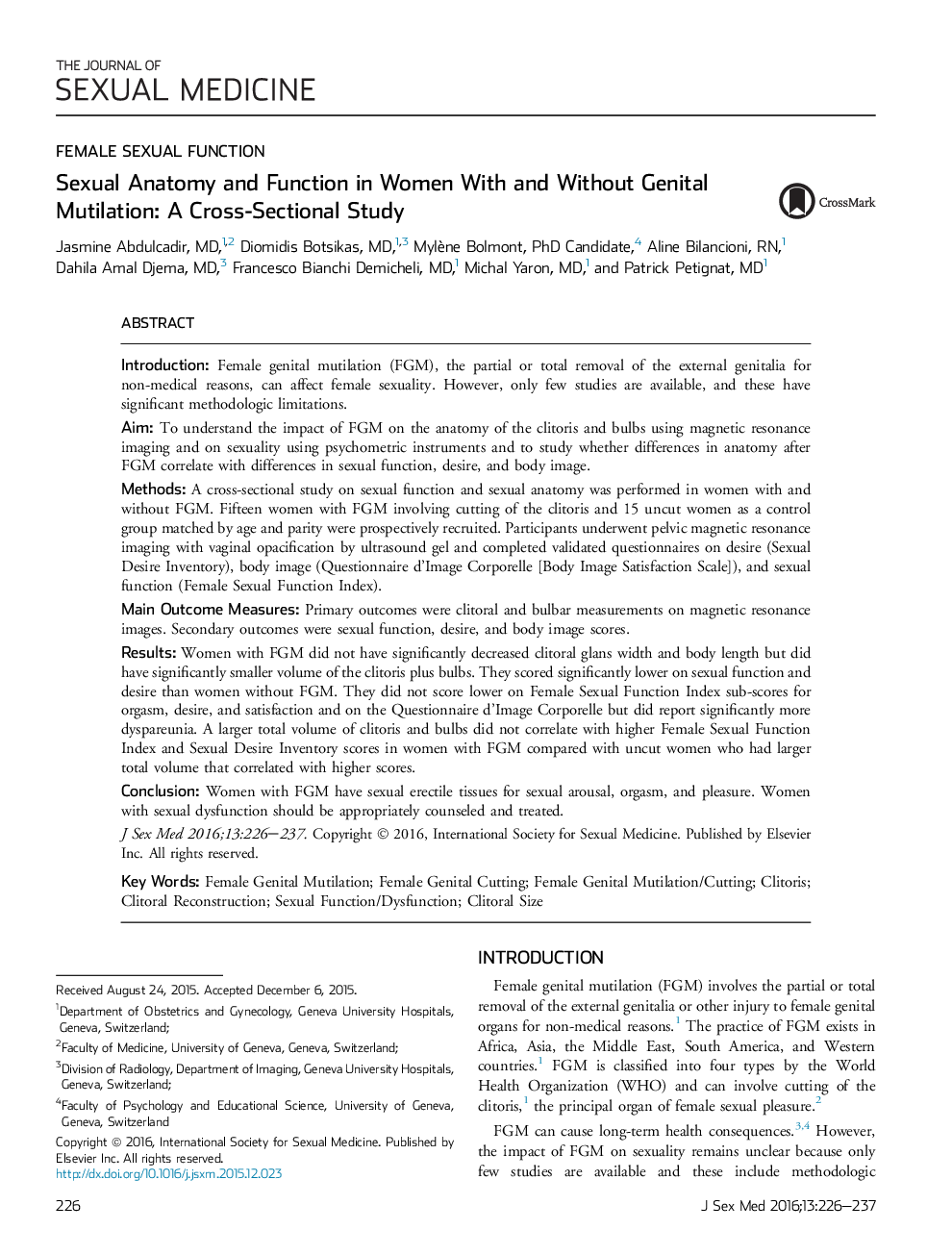| Article ID | Journal | Published Year | Pages | File Type |
|---|---|---|---|---|
| 4269294 | The Journal of Sexual Medicine | 2016 | 12 Pages |
IntroductionFemale genital mutilation (FGM), the partial or total removal of the external genitalia for non-medical reasons, can affect female sexuality. However, only few studies are available, and these have significant methodologic limitations.AimTo understand the impact of FGM on the anatomy of the clitoris and bulbs using magnetic resonance imaging and on sexuality using psychometric instruments and to study whether differences in anatomy after FGM correlate with differences in sexual function, desire, and body image.MethodsA cross-sectional study on sexual function and sexual anatomy was performed in women with and without FGM. Fifteen women with FGM involving cutting of the clitoris and 15 uncut women as a control group matched by age and parity were prospectively recruited. Participants underwent pelvic magnetic resonance imaging with vaginal opacification by ultrasound gel and completed validated questionnaires on desire (Sexual Desire Inventory), body image (Questionnaire d'Image Corporelle [Body Image Satisfaction Scale]), and sexual function (Female Sexual Function Index).Main Outcome MeasuresPrimary outcomes were clitoral and bulbar measurements on magnetic resonance images. Secondary outcomes were sexual function, desire, and body image scores.ResultsWomen with FGM did not have significantly decreased clitoral glans width and body length but did have significantly smaller volume of the clitoris plus bulbs. They scored significantly lower on sexual function and desire than women without FGM. They did not score lower on Female Sexual Function Index sub-scores for orgasm, desire, and satisfaction and on the Questionnaire d'Image Corporelle but did report significantly more dyspareunia. A larger total volume of clitoris and bulbs did not correlate with higher Female Sexual Function Index and Sexual Desire Inventory scores in women with FGM compared with uncut women who had larger total volume that correlated with higher scores.ConclusionWomen with FGM have sexual erectile tissues for sexual arousal, orgasm, and pleasure. Women with sexual dysfunction should be appropriately counseled and treated.
